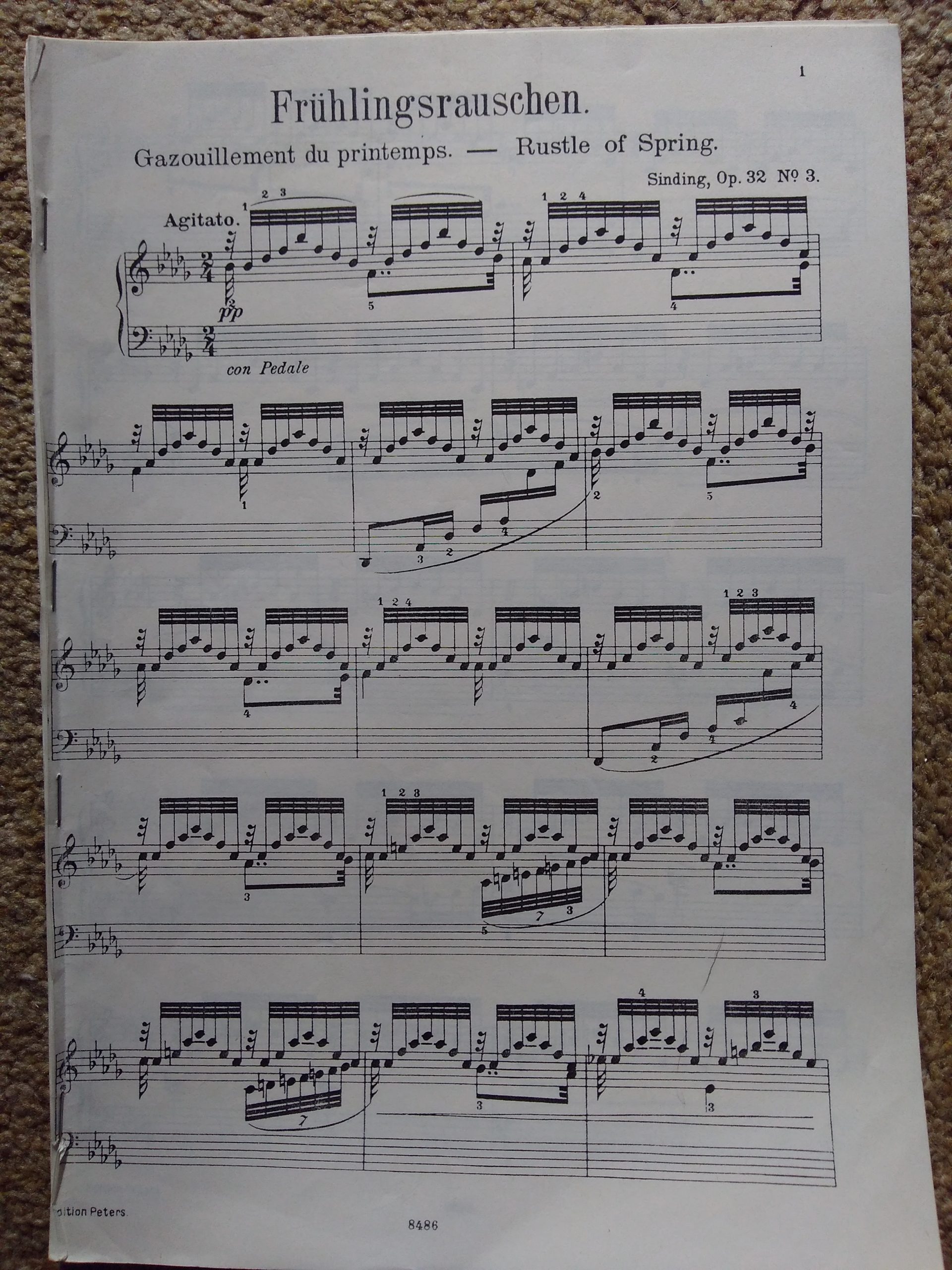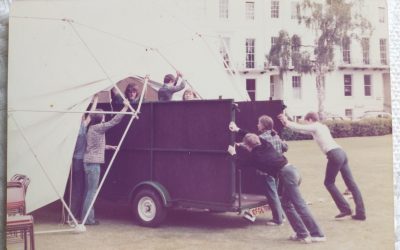 Here’s a neglected piece! Years ago, ‘Rustle of Spring’ was a favourite with amateur pianists, often of the older generation – ‘Uncle So-and-So’s party piece’, to be trotted out (possibly in abridged form) at parties. But I haven’t seen it on a concert programme for ages.
Here’s a neglected piece! Years ago, ‘Rustle of Spring’ was a favourite with amateur pianists, often of the older generation – ‘Uncle So-and-So’s party piece’, to be trotted out (possibly in abridged form) at parties. But I haven’t seen it on a concert programme for ages.
For something so virtuosic-sounding, some of its pages are gratifyingly – well, not easy, but possible to play. The ‘rustle’ is created by simple arpeggios rippling in the right hand while the melody flows beneath. When the action switches to the left hand, and the arpeggios become more complicated, the piece can slip out of a less secure player’s grasp. But the arpeggios can be simplified, and before long we surge into the reprise, where the effect of the opening may be enjoyed anew.
‘Rustle’ is not really the word for this torrent of notes, more like a waterfall plunging down a mountainside. There’s something quite Wagnerian about the way it bursts into being, and Wagner probably also inspired the way it ratchets up energy by repeating phrases a step higher, and a step higher still. During the reprise, you begin to wish Sinding had thought of a way to vary the material, but the piece doesn’t outstay its welcome.
Christian Sinding was a Norwegian composer who lived from 1856 (the year Robert Schumann died) to 1941, in the middle of the Second World War. He was considered the heir to Grieg, but where Grieg’s reputation has sailed peacefully on, Sinding’s has faded away.
The reason is not primarily to do with his music. In his last decade, Sinding suffered from dementia. Weeks before his death he was alleged to have joined the Norwegian Nazi Party. At a Nazi meeting he was proudly introduced as a well-known cultural figure who had joined the Party. But historians later found that he may never have signed the membership form, and he may never have understood what he was joining. A witness at that Nazi meeting remembered seeing the 85-year-old Sinding on the platform and thinking that he looked bewildered.
After the War, Norway turned its back on Nazi sympathisers. Sinding was quietly dropped from concert programmes and broadcasts. This was probably an unfair fate. ‘Rustle of Spring’ shows a captivating grasp of Romantic piano style, but it’s the only piece of Sinding’s I’ve ever come across.




What a sad ending to Sinding’s personal story. I grew up thinking that everyone played this piece because I heard it so often!
Thank you for this, Susan.It immediately took me back to my teenage years when I was given it to play by my piano teacher. I searched it out and have the same Edition Peters as you – the price 3/6 marked in pencil on one corner! I loved it as playing it made me sound like a much more impressive pianist than I really was!
His Piano Quintet Op.5 and Piano Concerto Op.6 are sensational. The latter recorded on Hyperion with Piers Lane, Bergen Phil, and Andrew Litton.